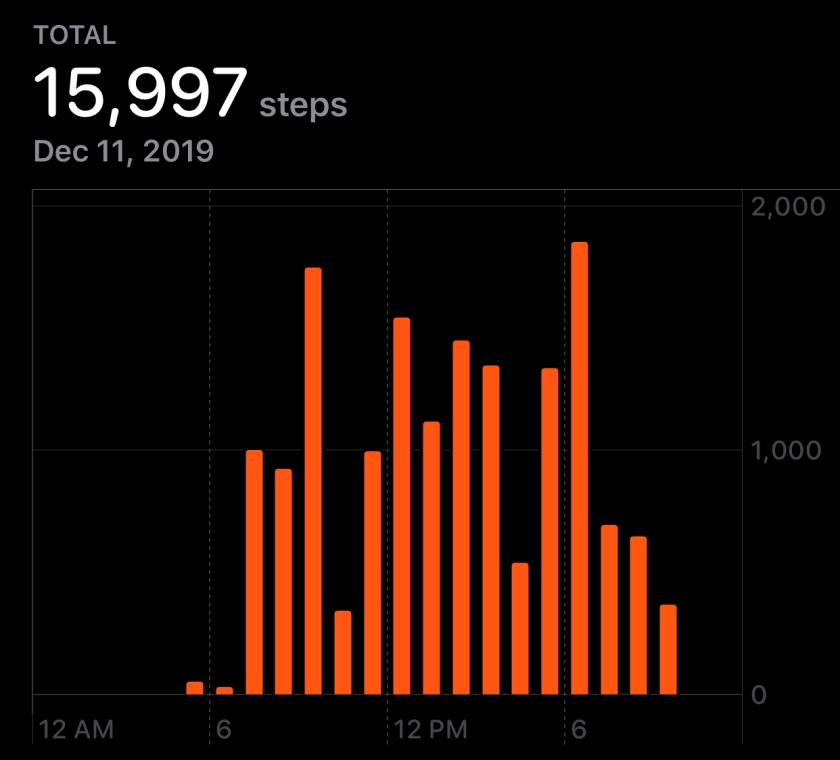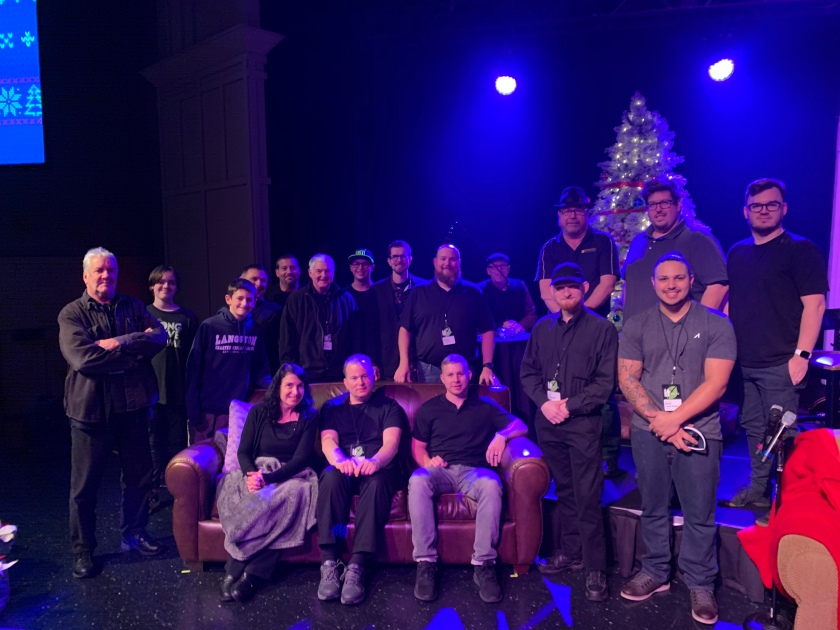I talk about programming and software and building solutions here a lot, but I thought I would write a post about something else I’m passionate about: live camera production. At my church, for the last 15 years or so, I’ve had the pleasure of getting to direct cameras for the annual Christmas program. We call the program, “Jingle Jazz”, because the music is mostly centered around a jazz format. In church terms, it’s an “invest and invite” event where people can bring their friends, neighbors, and co-workers for a great first exposure to Fellowship Greenville and have a fun relaxing evening filled with various styles of music.
This is one of a small handful of times a year where we get to maximize the potential of our volunteers and systems and put it all to the test. I always try to challenge myself to make it better than the year before, whether that’s adding more cameras, equipping volunteers, or even automating something.
In years past, I had a huge role involving writing scripts, creating and producing videos, and working late night after late night after late night and put “all of me” into this event to make it happen! In recent years, the workload has been balanced a lot better, and my job role has shifted some, so now I am not having to do so many late nights prior to the event. I did still manage to get in almost 16,000 steps one day last week though!

This year, I set a target goal of 14 cameras. I put out a call for volunteers and 11 people signed up! We used our primary auditorium cameras, older (like 12-15 year old) cameras using component to SDI adapters, borrowed production equipment from the communications department, rented 4 cameras, and I even traded some of my programming time to a local university in return to borrow some cameras and lenses from them. Overall, I felt like we were able to keep costs down by being good stewards of what we already had, and renting where needed.
One thing I did in advance that really helped me to succeed was to plot all of my patching across patchbays and plates in a spreadsheet. It helped me think through all the limitations I might face, especially when multiple cameras needed a signal/data cable as well as genlock/reference. Some of the cameras didn’t support genlock, so I had to frame sync those within the switcher. The Ross Carbonite switcher has 6 frame syncs, so after I ran out of syncs on the switcher for Auditorium 1, I actually sent signal to our switcher for Auditorium 2, synced them, and sent them back to the other switcher on aux sends! It took both control rooms to be able to pull off this many cameras, primarily because of the camera equipment we had available.

For intercoms, everyone was on a wired Clearcom. We used a combination of belt packs we already had plus adapters I made to work with some older stuff we used to use. The two mobile stage cameras used Unity Intercom bridged to our Clearcom system.

I knew I wanted to record what I call the “tech cut” that combines the multiviewer feed plus the intercom chatter this year so we could save it for review and training. The Carbonite switcher has two multiviewer outputs, so I dedicated one of them to viewing all 14 cameras for the recording.

Because the boxes were so small, I wanted a way to be able to see any camera on a larger screen, so I rolled in a TV cart and patched it to a MiniME output and controlled it from a Stream Deck (with Companion). Using Custom Controls, I was able to also have the multiviewer show a white box around whatever source was active on that TV cart. Here is a video of that in action:
One thing that I really am glad we did this year was to treat the LED wall that we have center stage as more of a lighting/stage element than something that our video team needed to drive. It was nice because the lighting guys controlled it all and I didn’t have to think about it! We used PVP and had motions and Christmas-themed b-roll on the screen most of the time, and occasionally cut to a graphic here and there as needed.
Like any service, it takes people to make it happen. We have great volunteers and staff here that I get to work with and lead.

As we were wrapping up this event, and I watched everyone serving with such joy even though it was a lot of late nights, I was reminded of this quote from author Simon Sinek:
When we work hard on something we don’t believe in, it’s called stress. When we work hard on something we believe in, it’s called passion. – Simon Sinek
Working and serving in tech ministry has to come from a place of passion, or it will always be stressful. Colossians 3:23-24 says, “Whatever you do, work heartily, as for the Lord and not for men, knowing that from the Lord you will receive the inheritance as your reward. You are serving the Lord Christ.”
May we always work heartily on what we believe in. Not just programming, software, or live production, but seeing God transform lives, and people pursuing life and mission with Jesus.
If you’d like to watch our tech cut, here it is!
Which cameras are your older cameras? Were you concerned about the quality of them not comparing? I am guessing you used an AJA box to do the converting.
LikeLike
Cameras 8, 9, 11, and 14. 8 was a Canon XHA1, 9 a JVC GYHD200, and 11&14 two older Sonys that I can’t recall the model. I used Blackmagic Analog Component to SDI for all of them. Camera 5 was a C100 that I used a decimator to convert hdmi to SDI. All other cameras had SDI out. If they didn’t take genlock I synced them at the switcher. I was very concerned about the quality not comparing but also had to compromise because my budget didn’t allow me to rent more than 4 cameras. If we have the show next year, I’d definitely scale back though and not use the old Sony cameras or the Canon XH anymore. The Sony’s just don’t look good and the Canon died.
LikeLike